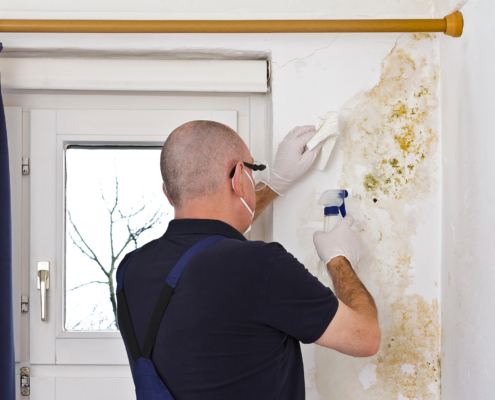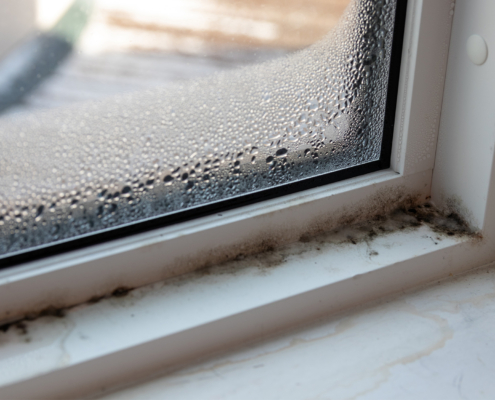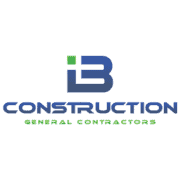 https://aeretusa.com/wp-content/uploads/2024/05/Mold-Prevention-Strategies-for-Your-Commercial-Building.jpg
1250
2000
Abstrakt MKTG
https://aeretusa.com/wp-content/uploads/2024/05/Aeret_Logo_tagline_Centered_RGB-300x80.jpg
Abstrakt MKTG2024-05-30 08:04:262024-07-26 08:16:57Mold Prevention Strategies for Your Commercial Building
https://aeretusa.com/wp-content/uploads/2024/05/Mold-Prevention-Strategies-for-Your-Commercial-Building.jpg
1250
2000
Abstrakt MKTG
https://aeretusa.com/wp-content/uploads/2024/05/Aeret_Logo_tagline_Centered_RGB-300x80.jpg
Abstrakt MKTG2024-05-30 08:04:262024-07-26 08:16:57Mold Prevention Strategies for Your Commercial BuildingThe Dangers of Black Mold
There could be a silent menace lurking in your commercial space—black mold. Reveal the secrets of this toxic invader and learn how to protect your premises and your well-being with our comprehensive guide.
A Silent Threat: Black Mold
Black mold, scientifically known as Stachybotrys chartarum, is notorious for its harmful effects on property and health. Its dark, slimy appearance may easily go unnoticed, but its impact can be devastating. Mold spores are microscopic in size and can easily spread through the air, infiltrating walls, ceilings, and other surfaces. The key factor in the growth of black mold is moisture, making areas with water damage or high humidity levels particularly vulnerable.
Health Risks of Black Mold Exposure
The dangers associated with black mold—officially known as Stachybotrys chartarum—extend beyond unsightly spots on walls or ceilings. When it comes to your health, black mold is not a matter to be taken lightly. This toxic fungus releases spores into the air that can wreak havoc on your well-being.
Detailed Discussion on Health Implications
Exposure to black mold spores has been closely linked to numerous health conditions, especially respiratory health. People living or working in environments with black mold stand at a higher risk of developing symptoms oftentimes mistaken for common illnesses.
Black Mold and Allergy Symptoms
For individuals sensitive to mold, symptoms can range from sneezing, coughing, and watery eyes to more severe allergic reactions. Black mold triggers an immune response that may result in chronic sinus infections and throat irritations and can even escalate to skin rashes and hives in those with heightened sensitivities.
Serious Health Concerns
Perhaps the most alarming health concerns are the respiratory issues that stem from prolonged exposure. Black mold can significantly aggravate asthma conditions, leading to an increase in the frequency and intensity of asthma attacks. Beyond the immediate respiratory symptoms, there’s the potential for long-term lung damage and scarring, which can irreversibly affect a person’s quality of life.
One cannot ignore the toxicity of certain gases, known as mycotoxins, produced by black mold. These dangerous compounds can lead to a toxic build-up in the body, resulting in a condition known as mycotoxicosis. Symptoms of mycotoxicosis are wide-ranging and can include chronic fatigue, persistent headaches, and in extreme cases, neurological damage.
Look out for these health risks:
- Respiratory Issues: Wheezing, difficulty breathing, and chest tightness.
- Asthma Aggravation: Increased severity and frequency of attacks.
- Toxicity from Mycotoxins: Possible systemic effects, including fatigue, headaches, and neurological impairment.
Identifying Black Mold in Commercial Properties
Black mold can often be identified by its visible characteristics. It typically appears as a dark, greenish-black gelatinous substance, although it can also have a powdery texture. Common locations include walls near humid areas, ceilings prone to leakage, or any place with poor ventilation.
Key visual indicators include:
- Irregularly shaped spots with a dark pigment
- Staining or discoloration on walls, floors, or ceilings
- Continuously damp areas that facilitate mold growth
Recognizing Distinct Odor as a Sign of Potential Mold Problems
Another telltale indicator of mold is a persistent musty or earthy smell. This odor is particularly noticeable in areas with poor air circulation. If such a scent is present, it warrants a thorough inspection, as it may point to the location of hidden mold colonies within the property.
Differentiating Black Mold From Other Mold Types
Not all mold that appears black is the toxic Stachybotrys chartarum. To accurately differentiate black mold from other non-toxic types, you may need the expertise of a mold specialist. Any mold in a commercial setting, regardless of its type, should be treated cautiously, as it poses risks to property integrity and occupant health.
How Black Mold Creeps Into a Commercial Building
Black mold thrives in moist, warm, and poorly ventilated environments often found within commercial buildings.
The common pathways through which black mold can infiltrate commercial spaces include:
- Water Incidents: Leaking pipes, roof damage, and flooding can introduce significant moisture, which is not always immediately addressed, creating a prime breeding ground for mold.
- High Humidity Areas: Properties in climates with high humidity are particularly at risk, especially if indoor air quality and ventilation are suboptimal.
- Inadequate Ventilation: Without proper ventilation, stale air can harbor humidity and condensation, especially in areas like basements or bathrooms, leading to mold growth.
- Condensation on Cool Surfaces: When warm, humid air contacts cooler surfaces like windows and metal pipes, condensation forms, and mold spores can settle and grow.
- Poorly Maintained HVAC Systems: Heating and air conditioning systems that are not regularly cleaned can circulate mold spores throughout a building.
- Building Materials and Furnishings: Materials such as drywall, ceiling tiles, carpet, or upholstery that become wet and are not dried quickly can support mold growth.
Steps to Remediate Black Mold
Proper remediation of black mold is critical to ensuring the safety and health of building occupants. Below are outlined steps for a comprehensive approach to black mold removal.
Outlining the Remediation Process from Assessment to Cleanup
- Initial Assessment: Begin by assessing the affected area to determine the extent of the mold problem. This step often requires a professional evaluation to identify all affected areas and the type of mold present.
- Containment: Before starting the remediation, isolate the contaminated area to prevent the spread of mold spores. Use barriers and negative air pressure to seal off the zone.
- Mold Removal: Utilize appropriate antifungal and antimicrobial treatments to eradicate the mold. Infested materials, such as drywall or insulation, should be removed and disposed of safely.
- Cleaning: Thoroughly clean all surfaces, including non-porous and porous materials, with specialized cleaning agents for mold removal. This includes furniture, fixtures, and any personal items in the vicinity.
- Drying: Ensure all areas and items are completely dry. Mold thrives in moisture, so removing all excess water is crucial in preventing future growth.
Personal Safety Measures During Mold Removal
- Wear Protective Gear: Individuals involved in the remediation process should wear appropriate personal protective equipment, including gloves, masks, and eye protection, to avoid mold exposure.
- Ensure Ventilation: Provide adequate ventilation to the cleanup area to prevent inhalation of mold spores. Use exhaust fans or High-Efficiency Particulate Air (HEPA) filters if necessary.
- Limit Access: Only individuals performing the remediation should be in the area. This minimizes the health risk to others and helps prevent cross-contamination.
Post-Remediation Steps to Ensure Complete Mold Elimination
- Follow-Up Testing: After completing the remediation, perform a verification assessment to ensure all mold has been successfully removed.
- Repair and Rebuild: Repair any structural damage and restore the remediated area with mold-resistant materials to help prevent future occurrences.
- Maintenance: Implement regular inspections and maintenance to prevent mold from returning. Address any moisture problems immediately and monitor previously affected areas.
Are you concerned about the dangers of black moldin your commercial property? Aeret Restoration specializes in identifying, treating, and removing black mold, ensuring your environment is safe and healthy. Our expert team restores your space with cutting-edge techniques and personalized care for each project.
Insurance Coverage for Mold Damage and Remediation
Mold can not only depreciate the value of your property but can also result in costly repairs and health-related lawsuits if not addressed properly. Insurance policies vary significantly in terms of mold coverage. Some insurers have strict limitations on mold damage, while others may provide more comprehensive protection. It is essential for property owners and managers to review their policies in detail to understand the extent of coverage provided for mold-related issues.
Assessing Policy Inclusions and Exclusions
An essential aspect of navigating insurance for black mold is learning what is included and excluded within your policy. Common exclusions can include mold growth due to neglect or lack of maintenance. On the contrary, mold that results from a “covered peril,” such as water damage from a burst pipe, is typically included. Policyholders must examine their policies meticulously or consult with an insurance agent to clarify these points.
Steps to Ensure Adequate Coverage for Mold Risks
To mitigate the financial risks associated with black mold, take the following steps:
- Review your current policy: Audit your existing coverage with a focus on mold-related clauses.
- Consult with professionals: Speak with insurance agents and risk assessment consultants to gauge the adequacy of your coverage.
- Consider additional coverage: If you find your current policy lacking, explore riders or additional policies that extend coverage to include mold-related damages.
- Understand the claims process: Be informed about the claims process so you can act quickly and efficiently in the event of mold damage.
When to Hire a Professional for Mold Removal
Minor mold issues, such as those less than 10 square feet, can often be managed in-house with the right safety measures and cleaning methods. However, hiring professional mold remediation services is recommended when dealing with large infestations, the dangers of black mold, or mold due to sewage or contaminated water. If the HVAC system is affected or occupants have health concerns related to mold exposure, expert assessment and remediation are necessary.
Benefits of Professional Assessment and Remediation Services
Professional mold removal offers many advantages:
- Expert Knowledge: Professionals are trained to identify all types of mold and know the best practices for effective remediation.
- Advanced Equipment: Experts use specialized equipment to detect hidden moisture and remove mold efficiently.
- Thorough Remediation: A professional team ensures that mold is not only removed but that sources of moisture are addressed to prevent future growth.
- Safety: Professionals are equipped with personal protective gear and follow strict safety protocols to prevent cross-contamination.
How to Choose a Reputable Mold Removal Company
Selecting the right company for mold remediation is crucial to ensure quality and reliable service.
Look for businesses that:
- Are licensed and insured, with a track record of dealing with mold issues.
- Offer a detailed mold assessment and remediation plan, including addressing the root cause.
- Have positive reviews and testimonials from past clients.
- Provide transparent communication about the process, timeline, and costs involved.
Partner With Aeret Restoration to Address Your Black Mold Issues
Aeret Restoration coordinates every step of mold remediation, meticulously managing the process from the preliminary inspection to finalizing your custom plan. We support you with effective communication strategies, maintaining regular contact with you to ensure smooth project progression. We’re committed to your satisfaction. Our managers constantly check in to meet milestones, alleviate your concerns, and adapt strategies to address the unexpected.
Our seasoned technicians accomplish mold removal with industry-trusted techniques. We quarantine affected zones and treat them with anti-mold agents. We meticulously eliminate mold from affected walls, floors, and other surfaces using HEPA vacuum systems and high-grade scrubbers. Our rigorous approach ensures the restoration of air quality, eradication of odors, and removal of visible mold traces.
Ready to eliminate moisture and secure your commercial property? Reach out today.









